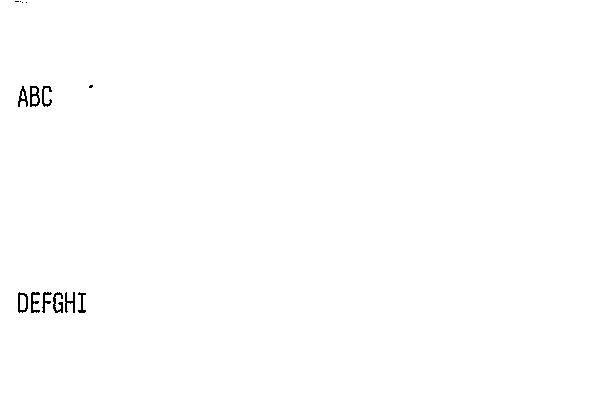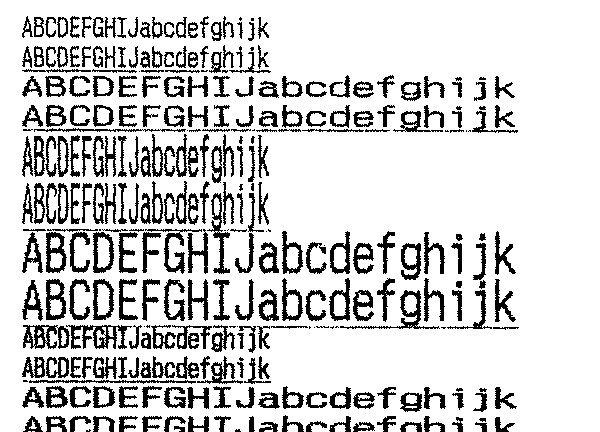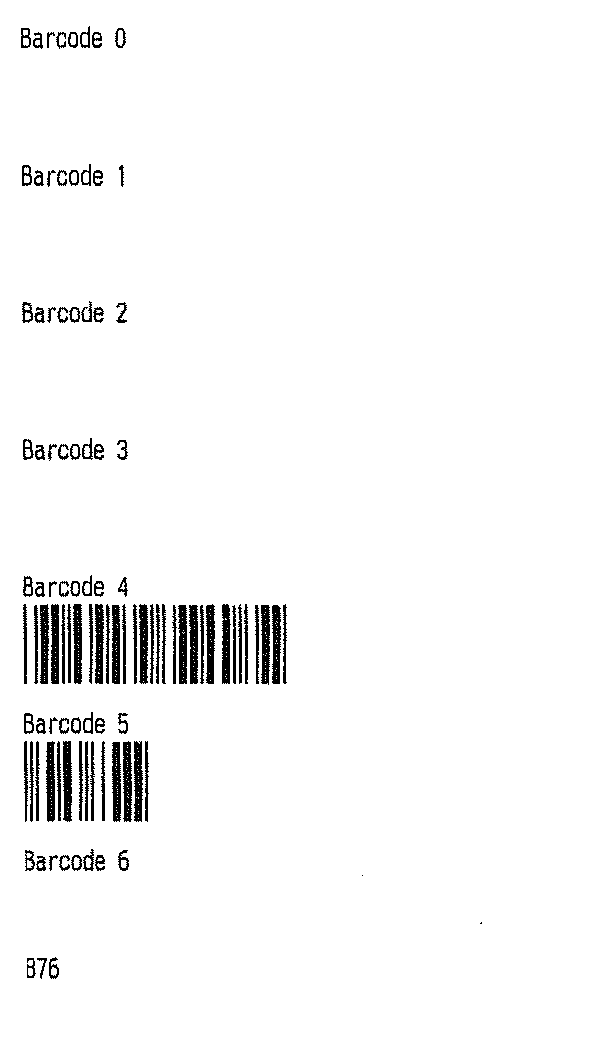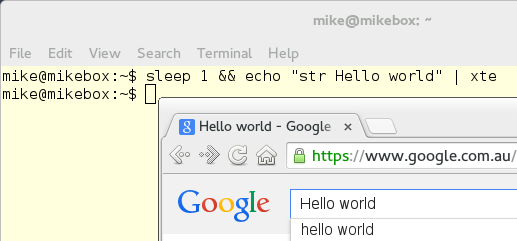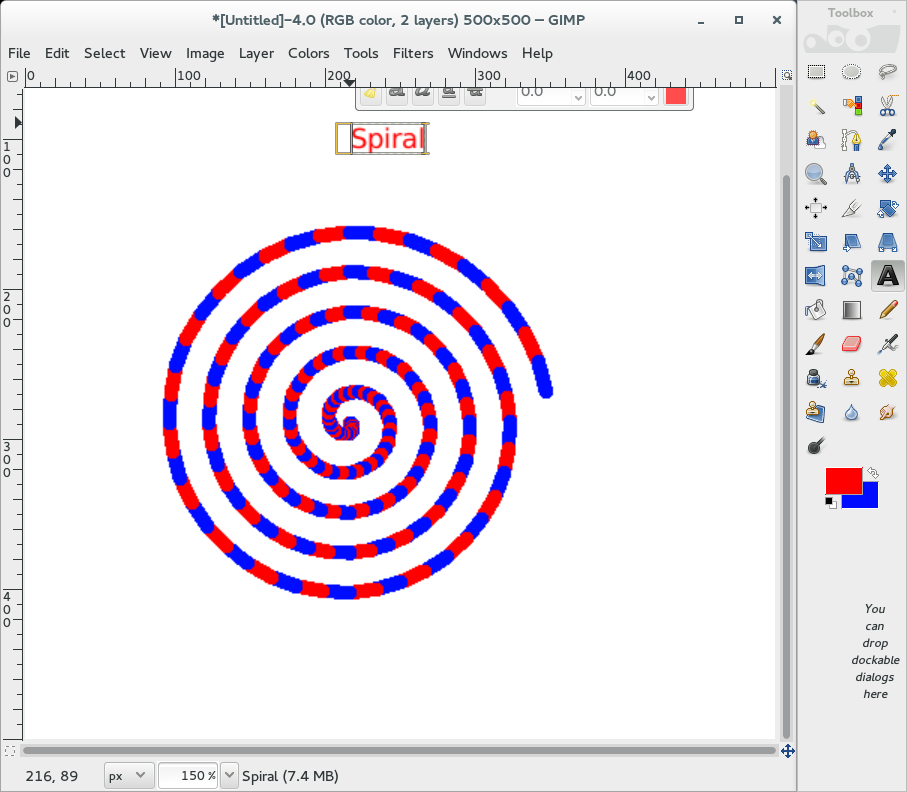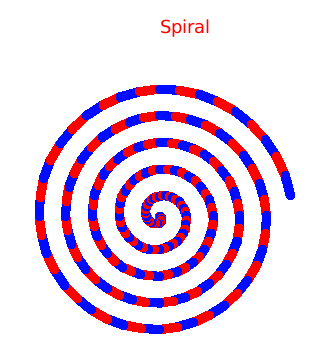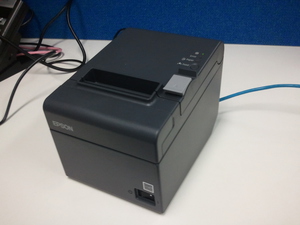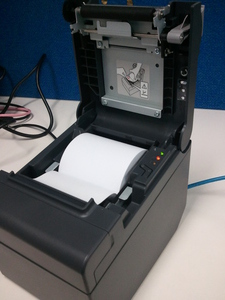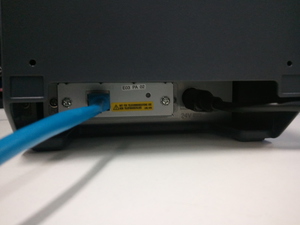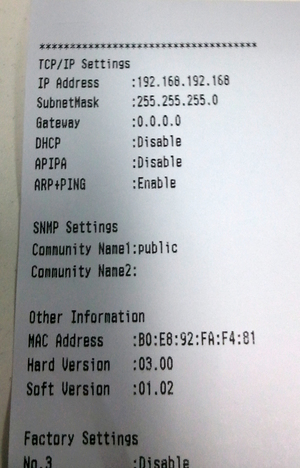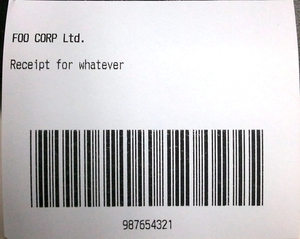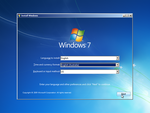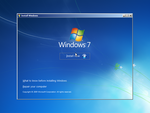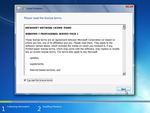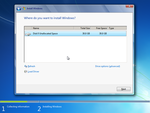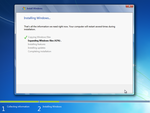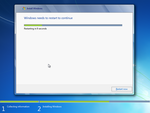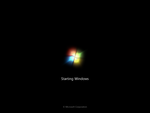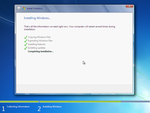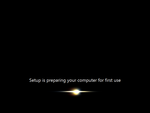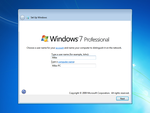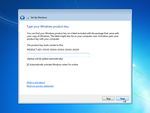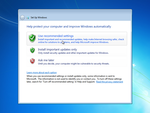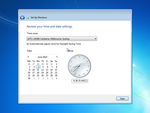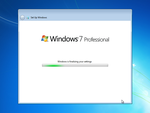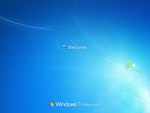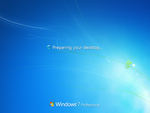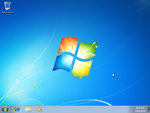ESC/POS is the command set which makes receipt printers print-
Introduction
Before we begin, there’s three things you need to know about ESC/POS:
- Most modern receipt printers support it in some form.
- It’s dead simple to write.
- Commands start with an ESC character (ASCII 27).
The most useful reference for the protocol is this Epson FAQ, which I’ve used previously to implement an ESC/POS printer driver for PHP.
Download printing library (PHP code)
Incidentally, the receipt printed in the above video is an example from the escpos-php repository. I’ll step through this print-out, as it demonstrates all of the basic ESC/POS features.
Command structure
Four specific ASCII characters make appearances in the command sequences-
| Abbreviation | Name | Code (Hex) |
|---|---|---|
| NUL | Null | 0x00 |
| LF | Line Feed | 0x0A |
| ESC | Escape | 0x1B |
| GS | Group Separator | 0x1D |
Regular text is simply sent to the printer, separated by line-breaks. Commands begin with ESC or GS, and are followed by a printable character, and sometimes some numbers
Numbers are simply passed as a character. For example, ‘5’ is passed as 0x05.
Examples
These examples are taken from the output of demo.php.
Initialisation
When you first connect to the printer, you should initialise it. This reverts to default formatting, rather than the triple-underlined double-strike font which the previous print-out may have been using.
require __DIR__ . '/autoload.php';
use Mike42\Escpos\Printer;
use Mike42\Escpos\PrintConnectors\FilePrintConnector;
$connector = new FilePrintConnector("/dev/usb/lp0");
$printer = new Printer($connector);
$printer -> close();00000000 1b 40 |.@|
00000003“Hello world” text
This is the simplest type of receipt, and contains only unformatted text.
require __DIR__ . '/autoload.php';
use Mike42\Escpos\Printer;
use Mike42\Escpos\PrintConnectors\FilePrintConnector;
$connector = new FilePrintConnector("/dev/usb/lp0");
$printer = new Printer($connector);
/* Text */
$printer -> text("Hello world\n");
$printer -> cut();
$printer -> close();00000000 1b 40 48 65 6c 6c 6f 20 77 6f 72 6c 64 0a 1d 56 |.@Hello world..V|
00000010 41 03 |A.|
00000012Line feeds
The printer can quickly skip past a given number of lines with this command.
ESC d [ number ]
ESC v [ number ]
The first command feeds forward, the second feeds in reverse. From the example, it can be seen that the demo printer does not support reverse paper feeding.
require_once(dirname(__FILE__) . "/escpos-php/Escpos.php");
$printer = new Escpos();
/* Line feeds */
$printer -> text("ABC");
$printer -> feed(7);
$printer -> text("DEF");
$printer -> feedReverse(3);
$printer -> text("GHI");
$printer -> feed();
$printer -> cut();
$printer -> close();00000000 1b 40 41 42 43 1b 64 07 44 45 46 1b 65 03 47 48 |.@ABC.d.DEF.e.GH|
00000010 49 0a 1d 56 41 03 |I..VA.|
00000016Print modes
Print modes include font height, width and boldness into a single attribute.
The font modes are made from logically OR’ing together a selection of attributes. 0 represents plan Font A text. Mode flags are:
| Mode | Number |
|---|---|
| Font A (no mode) | 0 |
| Font B | 1 |
| Emphasized | 8 |
| Double height | 16 |
| Double width | 32 |
| Underline | 128 |
The example receipt illustrates the effect of each flag.
require __DIR__ . '/autoload.php';
use Mike42\Escpos\Printer;
use Mike42\Escpos\PrintConnectors\FilePrintConnector;
$connector = new FilePrintConnector("/dev/usb/lp0");
$printer = new Printer($connector);
/* Font modes */
$modes = array(
Printer:::MODE_FONT_A,
Printer:::MODE_FONT_B,
Printer:::MODE_EMPHASIZED,
Printer:::MODE_DOUBLE_HEIGHT,
Printer:::MODE_DOUBLE_WIDTH,
Printer:::MODE_UNDERLINE);
for($i = 0; $i < 2 ** count($modes); $i++) {
$bits = str_pad(decbin($i), count($modes), "0", STR_PAD_LEFT);
$mode = 0;
for($j = 0; $j < strlen($bits); $j++) {
if(substr($bits, $j, 1) == "1") {
$mode |= $modes[$j];
}
}
$printer -> selectPrintMode($mode);
$printer -> text("ABCDEFGHIJabcdefghijk\n");
}
$printer -> selectPrintMode(); // Reset
$printer -> cut();
$printer -> close();00000000 1b 40 1b 21 00 41 42 43 44 45 46 47 48 49 4a 61 |.@.!.ABCDEFGHIJa|
00000010 62 63 64 65 66 67 68 69 6a 6b 0a 1b 21 80 41 42 |bcdefghijk..!.AB|
00000020 43 44 45 46 47 48 49 4a 61 62 63 64 65 66 67 68 |CDEFGHIJabcdefgh|
00000030 69 6a 6b 0a 1b 21 20 41 42 43 44 45 46 47 48 49 |ijk..! ABCDEFGHI|
00000040 4a 61 62 63 64 65 66 67 68 69 6a 6b 0a 1b 21 a0 |Jabcdefghijk..!.|
00000050 41 42 43 44 45 46 47 48 49 4a 61 62 63 64 65 66 |ABCDEFGHIJabcdef|
00000060 67 68 69 6a 6b 0a 1b 21 10 41 42 43 44 45 46 47 |ghijk..!.ABCDEFG|
00000070 48 49 4a 61 62 63 64 65 66 67 68 69 6a 6b 0a 1b |HIJabcdefghijk..|
00000080 21 90 41 42 43 44 45 46 47 48 49 4a 61 62 63 64 |!.ABCDEFGHIJabcd|
00000090 65 66 67 68 69 6a 6b 0a 1b 21 30 41 42 43 44 45 |efghijk..!0ABCDE|
000000a0 46 47 48 49 4a 61 62 63 64 65 66 67 68 69 6a 6b |FGHIJabcdefghijk|
000000b0 0a 1b 21 b0 41 42 43 44 45 46 47 48 49 4a 61 62 |..!.ABCDEFGHIJab|
000000c0 63 64 65 66 67 68 69 6a 6b 0a 1b 21 08 41 42 43 |cdefghijk..!.ABC|
000000d0 44 45 46 47 48 49 4a 61 62 63 64 65 66 67 68 69 |DEFGHIJabcdefghi|
000000e0 6a 6b 0a 1b 21 88 41 42 43 44 45 46 47 48 49 4a |jk..!.ABCDEFGHIJ|
000000f0 61 62 63 64 65 66 67 68 69 6a 6b 0a 1b 21 28 41 |abcdefghijk..!(A|
00000100 42 43 44 45 46 47 48 49 4a 61 62 63 64 65 66 67 |BCDEFGHIJabcdefg|
00000110 68 69 6a 6b 0a 1b 21 a8 41 42 43 44 45 46 47 48 |hijk..!.ABCDEFGH|
00000120 49 4a 61 62 63 64 65 66 67 68 69 6a 6b 0a 1b 21 |IJabcdefghijk..!|
00000130 18 41 42 43 44 45 46 47 48 49 4a 61 62 63 64 65 |.ABCDEFGHIJabcde|
00000140 66 67 68 69 6a 6b 0a 1b 21 98 41 42 43 44 45 46 |fghijk..!.ABCDEF|
00000150 47 48 49 4a 61 62 63 64 65 66 67 68 69 6a 6b 0a |GHIJabcdefghijk.|
00000160 1b 21 38 41 42 43 44 45 46 47 48 49 4a 61 62 63 |.!8ABCDEFGHIJabc|
00000170 64 65 66 67 68 69 6a 6b 0a 1b 21 b8 41 42 43 44 |defghijk..!.ABCD|
00000180 45 46 47 48 49 4a 61 62 63 64 65 66 67 68 69 6a |EFGHIJabcdefghij|
00000190 6b 0a 1b 21 01 41 42 43 44 45 46 47 48 49 4a 61 |k..!.ABCDEFGHIJa|
000001a0 62 63 64 65 66 67 68 69 6a 6b 0a 1b 21 81 41 42 |bcdefghijk..!.AB|
000001b0 43 44 45 46 47 48 49 4a 61 62 63 64 65 66 67 68 |CDEFGHIJabcdefgh|
000001c0 69 6a 6b 0a 1b 21 21 41 42 43 44 45 46 47 48 49 |ijk..!!ABCDEFGHI|
000001d0 4a 61 62 63 64 65 66 67 68 69 6a 6b 0a 1b 21 a1 |Jabcdefghijk..!.|
000001e0 41 42 43 44 45 46 47 48 49 4a 61 62 63 64 65 66 |ABCDEFGHIJabcdef|
000001f0 67 68 69 6a 6b 0a 1b 21 11 41 42 43 44 45 46 47 |ghijk..!.ABCDEFG|
00000200 48 49 4a 61 62 63 64 65 66 67 68 69 6a 6b 0a 1b |HIJabcdefghijk..|
00000210 21 91 41 42 43 44 45 46 47 48 49 4a 61 62 63 64 |!.ABCDEFGHIJabcd|
00000220 65 66 67 68 69 6a 6b 0a 1b 21 31 41 42 43 44 45 |efghijk..!1ABCDE|
00000230 46 47 48 49 4a 61 62 63 64 65 66 67 68 69 6a 6b |FGHIJabcdefghijk|
00000240 0a 1b 21 b1 41 42 43 44 45 46 47 48 49 4a 61 62 |..!.ABCDEFGHIJab|
00000250 63 64 65 66 67 68 69 6a 6b 0a 1b 21 09 41 42 43 |cdefghijk..!.ABC|
00000260 44 45 46 47 48 49 4a 61 62 63 64 65 66 67 68 69 |DEFGHIJabcdefghi|
00000270 6a 6b 0a 1b 21 89 41 42 43 44 45 46 47 48 49 4a |jk..!.ABCDEFGHIJ|
00000280 61 62 63 64 65 66 67 68 69 6a 6b 0a 1b 21 29 41 |abcdefghijk..!)A|
00000290 42 43 44 45 46 47 48 49 4a 61 62 63 64 65 66 67 |BCDEFGHIJabcdefg|
000002a0 68 69 6a 6b 0a 1b 21 a9 41 42 43 44 45 46 47 48 |hijk..!.ABCDEFGH|
000002b0 49 4a 61 62 63 64 65 66 67 68 69 6a 6b 0a 1b 21 |IJabcdefghijk..!|
000002c0 19 41 42 43 44 45 46 47 48 49 4a 61 62 63 64 65 |.ABCDEFGHIJabcde|
000002d0 66 67 68 69 6a 6b 0a 1b 21 99 41 42 43 44 45 46 |fghijk..!.ABCDEF|
000002e0 47 48 49 4a 61 62 63 64 65 66 67 68 69 6a 6b 0a |GHIJabcdefghijk.|
000002f0 1b 21 39 41 42 43 44 45 46 47 48 49 4a 61 62 63 |.!9ABCDEFGHIJabc|
00000300 64 65 66 67 68 69 6a 6b 0a 1b 21 b9 41 42 43 44 |defghijk..!.ABCD|
00000310 45 46 47 48 49 4a 61 62 63 64 65 66 67 68 69 6a |EFGHIJabcdefghij|
00000320 6b 0a 1b 21 00 41 42 43 44 45 46 47 48 49 4a 61 |k..!.ABCDEFGHIJa|
00000330 62 63 64 65 66 67 68 69 6a 6b 0a 1b 21 80 41 42 |bcdefghijk..!.AB|
00000340 43 44 45 46 47 48 49 4a 61 62 63 64 65 66 67 68 |CDEFGHIJabcdefgh|
00000350 69 6a 6b 0a 1b 21 20 41 42 43 44 45 46 47 48 49 |ijk..! ABCDEFGHI|
00000360 4a 61 62 63 64 65 66 67 68 69 6a 6b 0a 1b 21 a0 |Jabcdefghijk..!.|
00000370 41 42 43 44 45 46 47 48 49 4a 61 62 63 64 65 66 |ABCDEFGHIJabcdef|
00000380 67 68 69 6a 6b 0a 1b 21 10 41 42 43 44 45 46 47 |ghijk..!.ABCDEFG|
00000390 48 49 4a 61 62 63 64 65 66 67 68 69 6a 6b 0a 1b |HIJabcdefghijk..|
000003a0 21 90 41 42 43 44 45 46 47 48 49 4a 61 62 63 64 |!.ABCDEFGHIJabcd|
000003b0 65 66 67 68 69 6a 6b 0a 1b 21 30 41 42 43 44 45 |efghijk..!0ABCDE|
000003c0 46 47 48 49 4a 61 62 63 64 65 66 67 68 69 6a 6b |FGHIJabcdefghijk|
000003d0 0a 1b 21 b0 41 42 43 44 45 46 47 48 49 4a 61 62 |..!.ABCDEFGHIJab|
000003e0 63 64 65 66 67 68 69 6a 6b 0a 1b 21 08 41 42 43 |cdefghijk..!.ABC|
000003f0 44 45 46 47 48 49 4a 61 62 63 64 65 66 67 68 69 |DEFGHIJabcdefghi|
00000400 6a 6b 0a 1b 21 88 41 42 43 44 45 46 47 48 49 4a |jk..!.ABCDEFGHIJ|
00000410 61 62 63 64 65 66 67 68 69 6a 6b 0a 1b 21 28 41 |abcdefghijk..!(A|
00000420 42 43 44 45 46 47 48 49 4a 61 62 63 64 65 66 67 |BCDEFGHIJabcdefg|
00000430 68 69 6a 6b 0a 1b 21 a8 41 42 43 44 45 46 47 48 |hijk..!.ABCDEFGH|
00000440 49 4a 61 62 63 64 65 66 67 68 69 6a 6b 0a 1b 21 |IJabcdefghijk..!|
00000450 18 41 42 43 44 45 46 47 48 49 4a 61 62 63 64 65 |.ABCDEFGHIJabcde|
00000460 66 67 68 69 6a 6b 0a 1b 21 98 41 42 43 44 45 46 |fghijk..!.ABCDEF|
00000470 47 48 49 4a 61 62 63 64 65 66 67 68 69 6a 6b 0a |GHIJabcdefghijk.|
00000480 1b 21 38 41 42 43 44 45 46 47 48 49 4a 61 62 63 |.!8ABCDEFGHIJabc|
00000490 64 65 66 67 68 69 6a 6b 0a 1b 21 b8 41 42 43 44 |defghijk..!.ABCD|
000004a0 45 46 47 48 49 4a 61 62 63 64 65 66 67 68 69 6a |EFGHIJabcdefghij|
000004b0 6b 0a 1b 21 01 41 42 43 44 45 46 47 48 49 4a 61 |k..!.ABCDEFGHIJa|
000004c0 62 63 64 65 66 67 68 69 6a 6b 0a 1b 21 81 41 42 |bcdefghijk..!.AB|
000004d0 43 44 45 46 47 48 49 4a 61 62 63 64 65 66 67 68 |CDEFGHIJabcdefgh|
000004e0 69 6a 6b 0a 1b 21 21 41 42 43 44 45 46 47 48 49 |ijk..!!ABCDEFGHI|
000004f0 4a 61 62 63 64 65 66 67 68 69 6a 6b 0a 1b 21 a1 |Jabcdefghijk..!.|
00000500 41 42 43 44 45 46 47 48 49 4a 61 62 63 64 65 66 |ABCDEFGHIJabcdef|
00000510 67 68 69 6a 6b 0a 1b 21 11 41 42 43 44 45 46 47 |ghijk..!.ABCDEFG|
00000520 48 49 4a 61 62 63 64 65 66 67 68 69 6a 6b 0a 1b |HIJabcdefghijk..|
00000530 21 91 41 42 43 44 45 46 47 48 49 4a 61 62 63 64 |!.ABCDEFGHIJabcd|
00000540 65 66 67 68 69 6a 6b 0a 1b 21 31 41 42 43 44 45 |efghijk..!1ABCDE|
00000550 46 47 48 49 4a 61 62 63 64 65 66 67 68 69 6a 6b |FGHIJabcdefghijk|
00000560 0a 1b 21 b1 41 42 43 44 45 46 47 48 49 4a 61 62 |..!.ABCDEFGHIJab|
00000570 63 64 65 66 67 68 69 6a 6b 0a 1b 21 09 41 42 43 |cdefghijk..!.ABC|
00000580 44 45 46 47 48 49 4a 61 62 63 64 65 66 67 68 69 |DEFGHIJabcdefghi|
00000590 6a 6b 0a 1b 21 89 41 42 43 44 45 46 47 48 49 4a |jk..!.ABCDEFGHIJ|
000005a0 61 62 63 64 65 66 67 68 69 6a 6b 0a 1b 21 29 41 |abcdefghijk..!)A|
000005b0 42 43 44 45 46 47 48 49 4a 61 62 63 64 65 66 67 |BCDEFGHIJabcdefg|
000005c0 68 69 6a 6b 0a 1b 21 a9 41 42 43 44 45 46 47 48 |hijk..!.ABCDEFGH|
000005d0 49 4a 61 62 63 64 65 66 67 68 69 6a 6b 0a 1b 21 |IJabcdefghijk..!|
000005e0 19 41 42 43 44 45 46 47 48 49 4a 61 62 63 64 65 |.ABCDEFGHIJabcde|
000005f0 66 67 68 69 6a 6b 0a 1b 21 99 41 42 43 44 45 46 |fghijk..!.ABCDEF|
00000600 47 48 49 4a 61 62 63 64 65 66 67 68 69 6a 6b 0a |GHIJabcdefghijk.|
00000610 1b 21 39 41 42 43 44 45 46 47 48 49 4a 61 62 63 |.!9ABCDEFGHIJabc|
00000620 64 65 66 67 68 69 6a 6b 0a 1b 21 b9 41 42 43 44 |defghijk..!.ABCD|
00000630 45 46 47 48 49 4a 61 62 63 64 65 66 67 68 69 6a |EFGHIJabcdefghij|
00000640 6b 0a 1b 21 00 1d 56 41 03 |k..!..VA.|
00000649Underline
The argument is set to 0 for no underline, 1 for underline, 2 for heavy underline.
require __DIR__ . '/autoload.php';
use Mike42\Escpos\Printer;
use Mike42\Escpos\PrintConnectors\FilePrintConnector;
$connector = new FilePrintConnector("/dev/usb/lp0");
$printer = new Printer($connector);
/* Underline */
for($i = 0; $i < 3; $i++) {
$printer -> setUnderline($i);
$printer -> text("The quick brown fox jumps over the lazy dog\n");
}
$printer -> setUnderline(0); // Reset
$printer -> cut();
$printer -> close();00000000 1b 40 1b 2d 00 54 68 65 20 71 75 69 63 6b 20 62 |.@.-.The quick b|
00000010 72 6f 77 6e 20 66 6f 78 20 6a 75 6d 70 73 20 6f |rown fox jumps o|
00000020 76 65 72 20 74 68 65 20 6c 61 7a 79 20 64 6f 67 |ver the lazy dog|
00000030 0a 1b 2d 01 54 68 65 20 71 75 69 63 6b 20 62 72 |..-.The quick br|
00000040 6f 77 6e 20 66 6f 78 20 6a 75 6d 70 73 20 6f 76 |own fox jumps ov|
00000050 65 72 20 74 68 65 20 6c 61 7a 79 20 64 6f 67 0a |er the lazy dog.|
00000060 1b 2d 02 54 68 65 20 71 75 69 63 6b 20 62 72 6f |.-.The quick bro|
00000070 77 6e 20 66 6f 78 20 6a 75 6d 70 73 20 6f 76 65 |wn fox jumps ove|
00000080 72 20 74 68 65 20 6c 61 7a 79 20 64 6f 67 0a 1b |r the lazy dog..|
00000090 2d 00 1d 56 41 03 |-..VA.|
00000096Cuts
The argument apparently represents whether to perform a ‘partial’ (65) or ‘full’ (66) cut, but has no effect on my model of printer.
require __DIR__ . '/autoload.php';
use Mike42\Escpos\Printer;
use Mike42\Escpos\PrintConnectors\FilePrintConnector;
$connector = new FilePrintConnector("/dev/usb/lp0");
$printer = new Printer($connector);
/* Cuts */
for($i = 0; $i < 5; $i++) {
$printer -> cut(Printer:::CUT_PARTIAL);
$printer -> cut(Printer:::CUT_FULL);
}
$printer -> cut();
$printer -> close();00000000 1b 40 1d 56 42 03 1d 56 41 03 1d 56 42 03 1d 56 |.@.VB..VA..VB..V|
00000010 41 03 1d 56 42 03 1d 56 41 03 1d 56 42 03 1d 56 |A..VB..VA..VB..V|
00000020 41 03 1d 56 42 03 1d 56 41 03 1d 56 41 03 |A..VB..VA..VA.|
0000002eEmphasis
Use 1 to enable emphasis, and 0 to disable it.
require __DIR__ . '/autoload.php';
use Mike42\Escpos\Printer;
use Mike42\Escpos\PrintConnectors\FilePrintConnector;
$connector = new FilePrintConnector("/dev/usb/lp0");
$printer = new Printer($connector);
/* Emphasis */
for($i = 0; $i < 2; $i++) {
$printer -> setEmphasis($i == 1);
$printer -> text("The quick brown fox jumps over the lazy dog\n");
}
$printer -> setEmphasis(false); // Reset
$printer -> cut();
$printer -> close();00000000 1b 40 1b 45 00 54 68 65 20 71 75 69 63 6b 20 62 |.@.E.The quick b|
00000010 72 6f 77 6e 20 66 6f 78 20 6a 75 6d 70 73 20 6f |rown fox jumps o|
00000020 76 65 72 20 74 68 65 20 6c 61 7a 79 20 64 6f 67 |ver the lazy dog|
00000030 0a 1b 45 01 54 68 65 20 71 75 69 63 6b 20 62 72 |..E.The quick br|
00000040 6f 77 6e 20 66 6f 78 20 6a 75 6d 70 73 20 6f 76 |own fox jumps ov|
00000050 65 72 20 74 68 65 20 6c 61 7a 79 20 64 6f 67 0a |er the lazy dog.|
00000060 1b 45 00 1d 56 41 03 |.E..VA.|
00000067Double-strike
Use 1 to enable, or 0 to disable. On the model tested here, this appears to be identical to the “emphasis” mode above.
require __DIR__ . '/autoload.php';
use Mike42\Escpos\Printer;
use Mike42\Escpos\PrintConnectors\FilePrintConnector;
$connector = new FilePrintConnector("/dev/usb/lp0");
$printer = new Printer($connector);
/* Double-strike (looks basically the same as emphasis) */
for($i = 0; $i < 2; $i++) {
$printer -> setDoubleStrike($i == 1);
$printer -> text("The quick brown fox jumps over the lazy dog\n");
}
$printer -> setDoubleStrike(false);
$printer -> cut();
$printer -> close();00000000 1b 40 1b 47 00 54 68 65 20 71 75 69 63 6b 20 62 |.@.G.The quick b|
00000010 72 6f 77 6e 20 66 6f 78 20 6a 75 6d 70 73 20 6f |rown fox jumps o|
00000020 76 65 72 20 74 68 65 20 6c 61 7a 79 20 64 6f 67 |ver the lazy dog|
00000030 0a 1b 47 01 54 68 65 20 71 75 69 63 6b 20 62 72 |..G.The quick br|
00000040 6f 77 6e 20 66 6f 78 20 6a 75 6d 70 73 20 6f 76 |own fox jumps ov|
00000050 65 72 20 74 68 65 20 6c 61 7a 79 20 64 6f 67 0a |er the lazy dog.|
00000060 1b 47 00 1d 56 41 03 |.G..VA.|
00000067Fonts
There are three possible fonts, documented as “A”, “B” and “C”, and numbered 0, 1, and 2. Many printers, including this one, don’t have Font C.
require __DIR__ . '/autoload.php';
use Mike42\Escpos\Printer;
use Mike42\Escpos\PrintConnectors\FilePrintConnector;
$connector = new FilePrintConnector("/dev/usb/lp0");
$printer = new Printer($connector);
/* Fonts (many printers do not have a 'Font C') */
$fonts = array(
Printer:::FONT_A,
Printer:::FONT_B,
Printer:::FONT_C);
for($i = 0; $i < count($fonts); $i++) {
$printer -> setFont($fonts[$i]);
$printer -> text("The quick brown fox jumps over the lazy dog\n");
}
$printer -> setFont(); // Reset
$printer -> cut();
$printer -> close();00000000 1b 40 1b 4d 00 54 68 65 20 71 75 69 63 6b 20 62 |.@.M.The quick b|
00000010 72 6f 77 6e 20 66 6f 78 20 6a 75 6d 70 73 20 6f |rown fox jumps o|
00000020 76 65 72 20 74 68 65 20 6c 61 7a 79 20 64 6f 67 |ver the lazy dog|
00000030 0a 1b 4d 01 54 68 65 20 71 75 69 63 6b 20 62 72 |..M.The quick br|
00000040 6f 77 6e 20 66 6f 78 20 6a 75 6d 70 73 20 6f 76 |own fox jumps ov|
00000050 65 72 20 74 68 65 20 6c 61 7a 79 20 64 6f 67 0a |er the lazy dog.|
00000060 1b 4d 02 54 68 65 20 71 75 69 63 6b 20 62 72 6f |.M.The quick bro|
00000070 77 6e 20 66 6f 78 20 6a 75 6d 70 73 20 6f 76 65 |wn fox jumps ove|
00000080 72 20 74 68 65 20 6c 61 7a 79 20 64 6f 67 0a 1b |r the lazy dog..|
00000090 4d 00 1d 56 41 03 |M..VA.|
00000096Justification
Use 0 to justify left, 1 to centre the text, or 2 to right-align it.
require __DIR__ . '/autoload.php';
use Mike42\Escpos\Printer;
use Mike42\Escpos\PrintConnectors\FilePrintConnector;
$connector = new FilePrintConnector("/dev/usb/lp0");
$printer = new Printer($connector);
/* Justification */
$justification = array(
Printer:::JUSTIFY_LEFT,
Printer:::JUSTIFY_CENTER,
Printer:::JUSTIFY_RIGHT);
for($i = 0; $i < count($justification); $i++) {
$printer -> setJustification($justification[$i]);
$printer -> text("A man a plan a canal panama\n");
}
$printer -> setJustification(); // Reset
$printer -> cut();
$printer -> close();00000000 1b 40 1b 61 00 41 20 6d 61 6e 20 61 20 70 6c 61 |.@.a.A man a pla|
00000010 6e 20 61 20 63 61 6e 61 6c 20 70 61 6e 61 6d 61 |n a canal panama|
00000020 0a 1b 61 01 41 20 6d 61 6e 20 61 20 70 6c 61 6e |..a.A man a plan|
00000030 20 61 20 63 61 6e 61 6c 20 70 61 6e 61 6d 61 0a | a canal panama.|
00000040 1b 61 02 41 20 6d 61 6e 20 61 20 70 6c 61 6e 20 |.a.A man a plan |
00000050 61 20 63 61 6e 61 6c 20 70 61 6e 61 6d 61 0a 1b |a canal panama..|
00000060 61 00 1d 56 41 03 |a..VA.|
00000066Barcodes
ESC k [ number ] [ text ] NUL
The first command sets the barcode height — measured in dots, while the second one prints the actual barcode. The number represents the barcode standard, which for most purposes should be “4”, representing CODE39. 6 standards are supported by the PHP driver.
You will notice that due to driver glitches or printer incompatibility, not all of the barcodes print! As above, my advice is to use CODE39 if you run into this.
require __DIR__ . '/autoload.php';
use Mike42\Escpos\Printer;
use Mike42\Escpos\PrintConnectors\FilePrintConnector;
$connector = new FilePrintConnector("/dev/usb/lp0");
$printer = new Printer($connector);
/* Barcodes */
$barcodes = array(
Printer:::BARCODE_UPCA,
Printer:::BARCODE_UPCE,
Printer:::BARCODE_JAN13,
Printer:::BARCODE_JAN8,
Printer:::BARCODE_CODE39,
Printer:::BARCODE_ITF,
Printer:::BARCODE_CODABAR);
$printer -> setBarcodeHeight(80);
for($i = 0; $i < count($barcodes); $i++) {
$printer -> text("Barcode $i " . "\n");
$printer -> barcode("9876", $barcodes[$i]);
$printer -> feed();
}
$printer -> cut();
$printer -> close();00000000 1b 40 1d 68 50 42 61 72 63 6f 64 65 20 30 20 0a |.@.hPBarcode 0 .|
00000010 1d 6b 00 39 38 37 36 00 0a 42 61 72 63 6f 64 65 |.k.9876..Barcode|
00000020 20 31 20 0a 1d 6b 01 39 38 37 36 00 0a 42 61 72 | 1 ..k.9876..Bar|
00000030 63 6f 64 65 20 32 20 0a 1d 6b 02 39 38 37 36 00 |code 2 ..k.9876.|
00000040 0a 42 61 72 63 6f 64 65 20 33 20 0a 1d 6b 03 39 |.Barcode 3 ..k.9|
00000050 38 37 36 00 0a 42 61 72 63 6f 64 65 20 34 20 0a |876..Barcode 4 .|
00000060 1d 6b 04 39 38 37 36 00 0a 42 61 72 63 6f 64 65 |.k.9876..Barcode|
00000070 20 35 20 0a 1d 6b 05 39 38 37 36 00 0a 42 61 72 | 5 ..k.9876..Bar|
00000080 63 6f 64 65 20 36 20 0a 1d 6b 06 39 38 37 36 00 |code 6 ..k.9876.|
00000090 0a 1d 56 41 03 |..VA.|
00000095Resources
Linked previously in this post:
- escpos-php: Library to work with ESC/POS thermal printers
- Epson FAQ on ESC/POS (via the Internet Archive)
And if you’ve just received an Epson printer and need to figure out how it works:
Update 2015-03-10: Re-wrote examples for the newer version of escpos-php.
Update 2016-04-22: Updated examples again to match the latest driver code.

